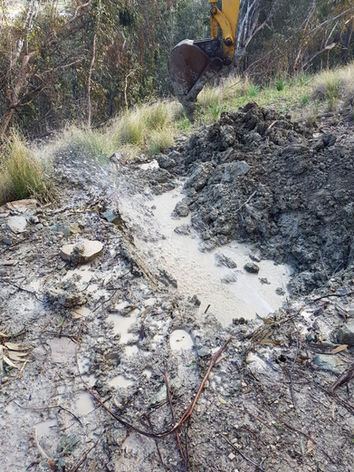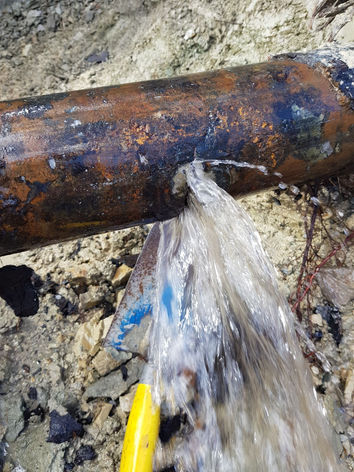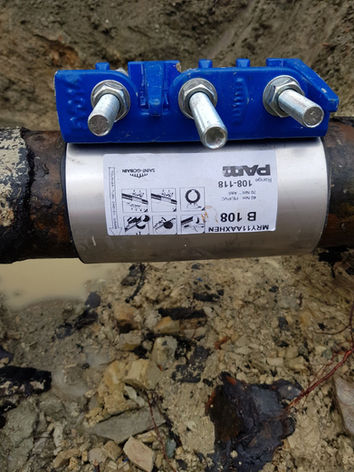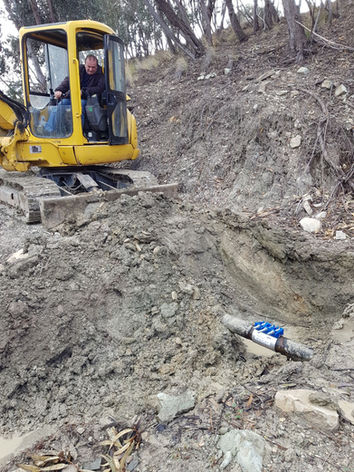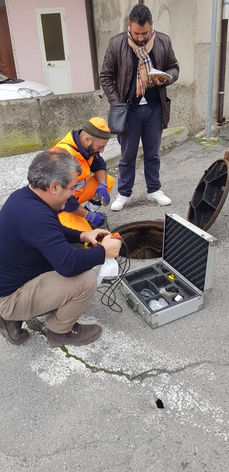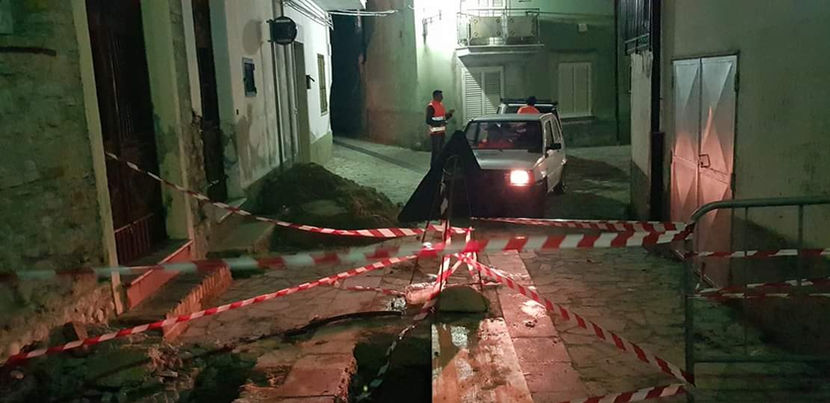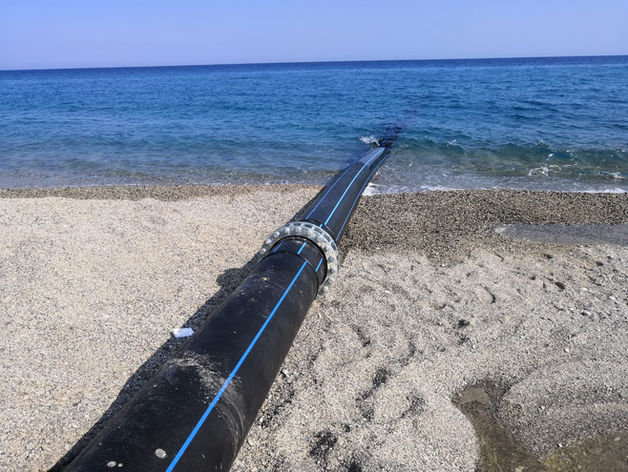INTEGRATED WATER SERVICE
The Integrated Water Service under management is made up of all public services for the collection, supply and distribution of water and sewage and purification of waste water, as well as for the disposal of residual sludge, as required by current legislation on the matter.
DRINKING WATER CHARACTERISTICS
The water distributed in the area served comes from various local springs and wells, which, due to their location, provide water with excellent characteristics.
The parameters of the water distributed in Roccella Jonica have values that qualify "medium mineral" water, particularly good, with excellent organoleptic qualities.
WATER AND CALCIUM
One of the most frequently asked questions concerns the hardness of the water due to the presence of calcium. Calcium is one of the components of water and is essential for bone growth and solidity. Many foods such as milk and cheese supply the amount of calcium needed for daily needs. The water distributed by Jonica Multiservizi SpA has an average hardness of 14 ° F (French degrees). When the water is heated to temperatures over 60 °, the calcium precipitates and settles on the domestic appliances and with time it can wear them down. Many therefore resort to the use of water softeners, called purifiers, which reduce the amount of calcium. This can be useful for maintaining washing machines and dishwashers but is not recommended for food use.
WATER AND CHLORINE
The chlorine odor that is rarely felt is due to the chlorine added to comply with the laws on the hygiene and sanitary safety of the distributed water. On different points of the network there are special chlorination units that regulate the dosage, even if minimal, to be introduced into the network. Houses near the control units can occasionally sense chlorine in the tap water, however it is sufficient to let the water settle in a carafe for a few minutes to remove the presence of chlorine.
THE QUALITY PARAMETERS
The analytical control of water intended for human consumption, and therefore the surveillance of its quality characteristics from the sources of supply to the distribution network, has as its fundamental objective the protection of public health.
The checks carried out by Jonica Multiservizi SpA are carried out following a monthly schedule and concern the parameters established by current legislation.
In order to give the widest space to information on the qualitative characteristics of the water supplied, significant data are published that characterize the water that comes out of your tap in the Water analysis section of the site.
THE MEANING OF THE MAIN PARAMETERS IS BRIEFLY INDICATED:
pH - HYDROGEN ION CONCENTRATION
It is a quantity that indicates how aggressive, acidic (pH lower than 7) or basic (pH higher than 7) is.
It is included among the indicator parameters, with a recommended value between 6.5 and 9.5.
CALCULATED FIXED RESIDUE
It is a measure of the salts dissolved in the water and derives mainly from the presence of the sodium, potassium, calcium, magnesium, chloride, sulphate and bicarbonate ions. Based on the fixed residue, the waters can be classified as follows:
o Minimally mineralized: <50 mg / l
o Low mineral content or slightly mineralized: <500 mg / l; o Medium mineralized: between 500 and 1000 mg / l
o Rich in salts:> 1500 mg / l
The fixed residue is included in the indicator parameters, with a maximum recommended value of 1,500 mg / l-
HARDNESS
It is a natural feature of water and is closely linked to the presence of calcium and magnesium ions in solution. The most used unit of measurement is the French degree (° F), which corresponds to 10 mg / l of calcium carbonate. Depending on the different degrees of hardness, the waters can be classified as follows:
or light or fresh water: hardness lower than 15 ° F
o medium hard waters: hardness between 15 and 30 ° F
or hard water: hardness above 30 ° F
The hardness is included in the indicator parameters, with a recommended value between 15 and 50 ° F.
CONDUCTIVITY
It is the ability of a solution to conduct an electric current and is measured in micro Siemens units per centimeter (µScm-1) at a temperature of 20 ° C. The salts dissolved in the water allow the passage of the electric current: a high conductivity value is an indication of a high quantity of mineral salts dissolved in the water.
Conductivity is inserted between the indicator parameters, with a maximum recommended value of 2,500 µScm-1.
CALCIUM
The presence of calcium in the water is due to the dissolution of the minerals. Calcium contributes significantly to the total hardness of the water.
The Legislative Decree n. 31/2001 does not provide for a limit for the calcium parameter in drinking water.
MAGNESIUM
Magnesium is found naturally in minerals and, dissolved in water, contributes, like Calcium, to total hardness.
The Legislative Decree n. 31/2001 does not provide for a limit for the magnesium parameter in drinking water.
AMMONIUM
Ammonia, which in the ionized form is referred to as ammonium ion, can be naturally present in the environment and can increase due to the contributions of anthropic activity (agro-zootechnical and industrial).
Ammonium is included among the indicator parameters, with a maximum recommended value of 0.50 mg / l.
CHLORIDE
The chloride ion is widely distributed in nature in the form of sodium (NaCl), potassium (KCl) and calcium (CaCl2) salts. Chloride increases the electrical conductivity of the water and consequently the fixed residue.
Chloride is included among the indicator parameters, with a maximum recommended value of 250 mg / l.
SULPHATES
They occur naturally in numerous minerals and for this reason they can also be found in drinking water.
Sulphate is included among the indicator parameters, with a maximum recommended value of 250 mg / l.
POTASSIUM
Potassium is an essential element in the diet of plants and animals.
It can naturally be present in the environment and can increase due to the contributions of agronomic activity.
The Legislative Decree n. 31/2001 does not provide for a limit for the potassium parameter in drinking water.
SODIUM
Sodium is an essential element for the body and is abundant in natural compounds.
Sodium is included among the indicator parameters: the maximum recommended value of 200 mg / l has an organoleptic rather than sanitary meaning.
ARSENIC
It is an element present in rocks, minerals and soil and its presence in water is mainly due to natural processes of dissolution from minerals and rocks.
The Legislative Decree n. 31/2001 establishes a legal limit for arsenic of 10 µg / l.
bicarbonates
They are naturally present in the water due to the carbonate - bicarbonate balance and derive from the carbon dioxide dissolved in the water which subsequently alters the carbonate and siliceous rocks.
The Legislative Decree n. 31/2001 does not provide for a limit for the bicarbonate parameter in drinking water.
RESIDUAL CHLORINE
The water supplied is disinfected, normally using sodium hypochlorite or chlorine dioxide to ensure that the microbiological requirements prescribed by Legislative Decree 31/2001 are respected in all conditions.
The residual chlorine parameter, which is the amount of disinfectant left in the water at the time of the analysis, is an indicator parameter with a maximum recommended value of 0.2 mg / l.
Depending on the type of disinfectant used, the user can perceive, based on his own individual sensitivity, an alteration of the organoleptic characteristics of the water which does not in any way compromise its suitability for human consumption.
FLUORIDES
Fluorine occurs naturally in minerals and is present in water, in animal and vegetable organisms mainly in the form of fluoride ion.
The Legislative Decree n. 31/2001 establishes a legal limit for fluorides of 1.50 mg / l.
NITRATES
They are compounds present in the water both as a result of natural phenomena (nitrogen decomposition cycle) and as a consequence of human activities.
The Legislative Decree n. 31/2001 establishes a legal limit for nitrates of 50 mg / l.
NITRITES
They are compounds deriving from the degradation of nitrates.
The Legislative Decree n. 31/2001 provides a legal limit for nitrite of 0.50 mg / l.
MANGANESE
Manganese is an essential element for living organisms.
It is one of the most abundant metals in the earth's crust, and in particular environmental conditions it is present abundantly in groundwater.
Manganese is included among the indicator parameters, with a maximum recommended value of 50 µg / l.







